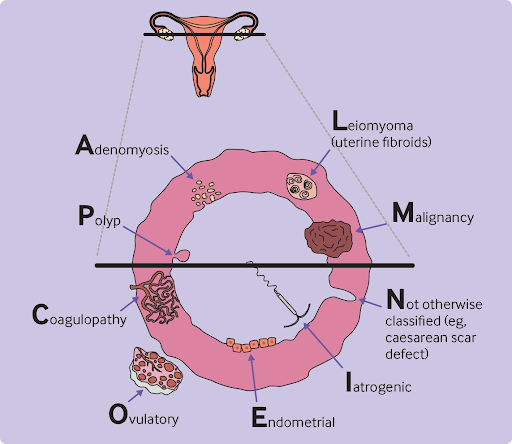Abnormal Uterine Bleeding
AUB, Abnormal Uterine Bleeding
AUB, Abnormal Uterine Bleeding, sometimes referred to as Abnormal Vaginal Bleeding, is a term used to refer to heavy periods or bleeding between normal periods. It is a common condition affecting around 10% to 20% of women in the US.
Menorrhagia, also known as heavy periods, occurs when excessive blood is lost during monthly menstrual cycles.
Metrorrhagia, also known as bleeding between periods, occurs when uterine bleeding occurs between menstruations.
AUB is not just uncomfortable and inconvenient, but it can also affect the person’s quality of life, whether physical, mental, or emotional.
This condition is not always associated with physical abnormalities. Approximately 40% to 60% of people with heavy periods have no specific underlying cause.
AUB is associated with:
- Leaking through sanitary pads
- The necessity for double protection
- Flooding of menstrual blood onto clothes
- Large clots in the blood
- Sensations of weakness, tiredness
- Anemia
- Planning daily life around menstruation

Although the majority of people with AUB have no specific underlying cause, there are some known reasons :
- Polyps: non-cancerous growths in the lining of the uterus
- Endometriosis: when developed in the vagina and/or the lower uterus
- Fibroids: benign growths on the walls of the uterus
- Adenomyosis: when glands from the uterus lining embed in the muscle of the uterus
- Cancer: uterine cancer is uncommon but can cause heavy periods
- Thyroid disease: thyroid disease can cause tiredness, weight gain, changes in hair and skin, intolerance to colds, and AUB
- Clotting problems: platelet problems or certain diseases can affect clotting and increase AUB
- Medical treatments: some medical treatments, such as hormonal contraceptives, anticoagulants, and anti-cancer drugs, can cause AUB
- Blood tests,
- Ultrasound
- Hysteroscopy (a camera to visualize the cavity of the uterus)
As for treatments, there are many options available, including:
- Hormonal and non-hormonal treatments
- Endometrial ablation
- Minimally invasive surgical removal of fibroids and polyps
- Hysterectomy

